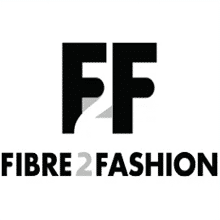Akwete weaving is deeply rooted in the cultural heritage of the Igbo people of Nigeria, particularly from the town of Akwete in the Ndoki region, Ukwa East Local Government Area of Abia State. According to Igbo folklore, the art of weaving in Akwete gained prominence in the late 19th century. Local weavers, inspired by imported fabrics from England, India, and other regions, began experimenting with vibrant, colourful threads. The legendary weaver, Dada Nwakwata, is often credited with revolutionising Akwete weaving. Her inventive designs are said to have laid the foundation for the craft as it is practised today. She remains a significant role model for contemporary Akwete weavers, who, like her, claim they can replicate any cloth design presented to them.
The Evolution of Akwete Weaving
Initially, weaving in Akwete was a part-time activity for some women, but by the mid to late 19th century, it had evolved into a full-time occupation for many in the community. Akwete weavers, particularly in response to demand from the neighbouring Ijo people of the Niger Delta, developed new techniques and innovative patterns. These patterns, woven into textile materials, became highly sought after, contributing to the growth of Akwete weaving as a significant local industry.
Unlike many other traditional weaving practices in Nigeria, which were often carried out on horizontal looms, Akwete weaving employs an upright frame loom. This setup allows for continuous warp, enabling the weaver to create intricate designs more efficiently. The base of Akwete cloth is usually cotton, but weavers often incorporate decorative patterns using heavier textured threads or threads in contrasting colours to create stunning visual effects.
Modern Akwete Weaving
Over time, Akwete cloth has evolved, and modern versions now feature a variety of materials such as silk, rayon, polyester, and lurex. These modern iterations are often woven with elaborate decorative motifs, each bearing a unique name inspired by its appearance or the weaver who created it. Historically, certain designs were reserved for royalty. For example, the ‘Ikaki' motif was exclusively worn by royal families, and any commoner found wearing it could be subjected to severe punishment, including enslavement. Many weavers claim that some of these intricate designs were revealed to them through dreams, further embedding a sense of mystique and tradition into the craft.
Materials and Techniques in Akwete Weaving
The tools and materials essential for producing Akwete cloth include the loom, heddle, beater (or sword), yarn, rope, shuttle, wax, and a brass spatula. The technique employed in Akwete weaving requires great skill and precision, and each piece is a labour of love, crafted with deep cultural significance.
Traditionally, Akwete cloth is woven in pairs and is commonly worn by Igbo women as a wrap-around skirt, known as a wrapper, paired with a lightweight machine-made blouse. For special public occasions, women often wear two wrappers: one tied to the ankle and another at mid-calf length. Meanwhile, men use Akwete fabric to create traditional shirts, commonly referred to as a ‘jumper’, ‘Wokor’, or ‘Etibo’, which are worn over trousers for formal events. The fabric’s versatility extends beyond clothing; smaller versions of Akwete cloth are used to make curtains, cushion covers, tablecloths, bedspreads, and even lectern covers.
Contemporary Developments in Akwete Weaving
In recent years, there has been a resurgence of interest in Akwete weaving as part of the larger movement towards promoting indigenous crafts and preserving Nigeria’s cultural heritage. The Nigerian government, through various initiatives, is supporting traditional artisans and weavers, encouraging them to adopt sustainable and eco-friendly practices. These efforts aim to elevate the status of Akwete cloth on the global stage, positioning it as a luxury textile with deep cultural roots.
The Nigerian government has implemented several initiatives aimed at preserving and promoting traditional crafts like Akwete weaving. Through the Federal Ministry of Industry, Trade, and Investment, the government has launched programmes that provide financial support and training to artisans, enabling them to enhance their skills and adopt more sustainable practices. One such initiative is the ‘National Development of Indigenous Textile Artisans’ project, which focuses on capacity building and improving the economic viability of traditional weaving.
Additionally, collaborations with international organisations and fashion houses are being fostered to increase global awareness of Nigerian textiles. The government is also encouraging the use of locally sourced, organic materials to reduce the environmental impact of textile production, positioning Akwete weaving as both an eco-friendly and culturally significant industry. This support aims to ensure that traditional weaving not only thrives in the modern market but also attracts global recognition as a luxury, heritage-rich product.
In addition, younger generations of Akwete weavers are blending traditional methods with modern designs to cater to contemporary fashion tastes. These innovations have led to Akwete fabric being featured in both local and international fashion shows, further solidifying its place as an enduring symbol of Igbo craftsmanship.
Today, Akwete weaving is not just a symbol of cultural identity but also a thriving industry with significant economic potential, offering weavers opportunities to share their rich heritage with the world. As more efforts are made to preserve and promote this unique craft, Akwete cloth continues to be a testament to the resilience and creativity of Nigerian artisans.









Comments